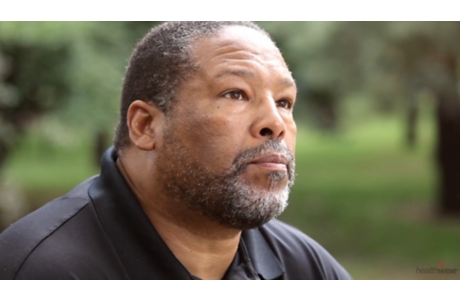Mindfulness-Based Stress Reduction
Topic Overview
What is mindfulness-based stress reduction (MBSR)?
MBSR is a program that helps you learn to calm your mind and body to help you cope with illness, pain, and stress.
MBSR teaches “mindfulness,” which is a focus only on things happening in the present moment. Mindfulness is not a time to “zone out” or “space out” but is rather a time to purposefully pay attention and be aware of your surroundings, your emotions, your thoughts, and how your body feels. For example, you may sit quietly and notice your emotions. You might focus only on the sounds around you or how your food tastes and smells. When you are mindful, you do just one thing and you pay close attention to that one thing.
Another important part of mindfulness is to not judge the present moment. This is because judgments may lead you to dwell on (or “get stuck” thinking about) unwanted situations, feelings, or thoughts. And dwelling on the past does not help you accept or solve problems. It just brings you down.
By training your mind to focus only on the present, you learn not to get lost in regrets from the past or worries about the future. Letting go of such thoughts may help you worry less and accept things as they are. Mindfulness teaches you to be in control of your mind so that your mind doesn’t control you.
How does MBSR work?
To help you focus your mind on the present, a class in MBSR usually teaches you to:
- Focus your attention on your entire body, starting with your feet and ending at your head. As you do this “body scan,” you might note places where you’re tense or have pain. You might notice how your belly rises and falls as you breathe.
- Focus on thoughts and distractions that run through your mind, but don’t judge them. For example, you might notice that a thought about work comes to your mind. Rather than worry about your thought, simply note the thought (“work”) and feeling (“worry”) without dwelling on them. Then turn your attention back to the present moment. It is common for the mind to wander when a person begins to practice mindfulness. If that happens to you, it’s okay. Keep trying. This is why mindfulness is called a practice—it takes practice to not judge your feelings and thoughts. It takes practice to stay in the present moment.
- Practice yoga breathing exercises, stretches, and poses to strengthen and relax muscles.
Try MBSR on your own
- When you go outside, take a few deep breaths. What’s the air like? Is it warm or cold? How does the warmth or chill feel on your body? Try to accept that feeling and not resist it. Notice any plants, their colors, and the contrast of those colors against the sky and clouds.
- Eat a meal in silence. Don’t do anything but focus on your food. Smell your food before eating it. Notice what your food looks like. Eat slowly, and savor each bite. What flavors do you taste?
- When you can, take some time at the beginning of your day to sit alone and think. Focus on your breathing. Gaze out the window, and listen to the sounds outdoors. Or take a slow walk by yourself. Count your steps while you breathe in and out.
- If you can do this at work, try to stop for a few moments each hour. Note how your body feels. Let yourself regroup and let your mind settle before you return to what you were doing.
- If you struggle with anxiety or “worry thoughts,” imagine your mind as a blue sky and your worry thoughts as clouds. Now imagine those worry thoughts floating across your mind’s sky, almost the same as you would watch clouds float across the sky. Do not judge or resist your thoughts. Just let them pass by as you watch.
How effective is MBSR?
Studies show that MBSR can reduce stress and help people relax. Studies of people who have type 2 diabetes, rheumatoid arthritis, heart disease, chronic pain, and other problems show that MBSR helped some people cope better with symptoms and improved their quality of life.
Research also shows that MBSR helped people sleep better and feel less anxious, and it helped ease depression symptoms. In some people, MBSR also helped improve blood sugar and blood pressure. footnote 1, footnote 2, footnote 3
Taking part in MBSR has been linked to positive changes in the areas of the brain that affect how you pay attention, how you feel, and how you think.footnote 4
References
Citations
- Merkes M (2010). Mindfulness-based stress reduction for people with chronic diseases. Australian Journal of Primary Health, 16(3): 200–210.
- Ledesma D, Kumano H (2009). Mindfulness-based stress reduction and cancer: A meta-analysis. Psycho-Oncology, 18(6): 571–579.
- Chiesa A, Serretti A (2009). Mindfulness-based stress reduction for stress management in healthy people: A review and meta-analysis. Journal of Alternative and Complementary Medicine, 15(5): 593–600.
- Keng SL, et al. (2011). Effects of mindfulness on psychological health: A review of empirical studies. Clinical Psychology Review, 31(6): 1041–1056.
Current as of: April 7, 2019
Author: Healthwise Staff
Medical Review:Patrice Burgess MD – Family Medicine & Kathleen Romito MD – Family Medicine & Christine R. Maldonado PhD – Behavioral Health
This information does not replace the advice of a doctor. Healthwise, Incorporated, disclaims any warranty or liability for your use of this information. Your use of this information means that you agree to the Terms of Use. Learn how we develop our content.





